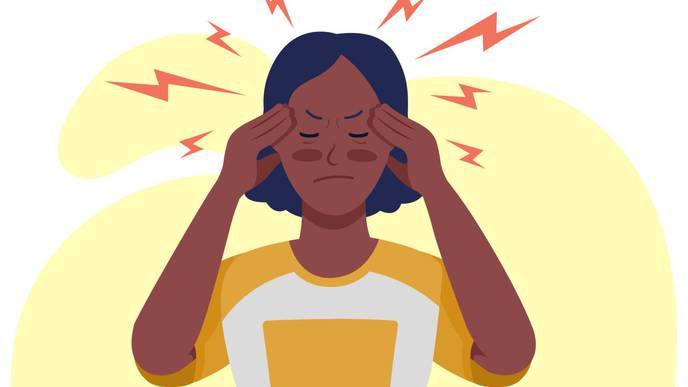Why Do My Migraine Attacks Get So Much Worse in the Winter?

01/19/2023
Just once, a headache-prone person would like to switch from pumpkins to mistletoe without a skull-splitting headache making an appearance. But where there are heads, there will be headaches—and, for some people, they show up in abundance during the winter months.
Basically everyone gets a headache at one point or another—luckily, most are brief annoyances that go away relatively quickly. Frequent or especially painful headaches, however, can be a sign of something more serious, such as a headache disorder.
One of the most common headache disorders is migraine, which often causes a throbbing pain on one side of the head, plus other potential symptoms, which can include sensitivity to light and sounds, nausea, and visual, sensory, or speech disturbances called aura, per the US National Library of Medicine.
Just like symptoms, headache and migraine triggers vary a ton from person to person. Though science hasn’t been able to verify that the seasons themselves make a difference, anecdotally, many people say their head pain is influenced by the weather, according to the American Migraine Foundation. And there are a handful of theories that might explain this experience. SELF spoke with experts about why winter, in particular, can feel like headache season—and what you can do to feel better during those cold, dreary days.
There are a few reasons why you might notice more head pain during winter.
“One of the interesting things we see clinically is that people often have a spike in migraine frequency right after the holiday season,” Niushen Zhang, MD, headache division chief and clinical associate professor of neurology at Stanford Medicine, tells SELF.
Many people with migraine encounter triggers that can spark attacks—and it’s surprising how many of them we tend to associate with winter. Drinking alcohol (mulled wine, anyone?), too much or too little caffeine (et tu, peppermint latte?), bright or flashing lights, strong smells (like scented candles), and certain foods (aged cheeses and cured meats are biggies) are all potential triggers.1
And, yes, weather-related changes can also be migraine triggers, according to the Mayo Clinic. That includes dry air (pick your poison between central heating and the frigid, parched outdoors), extreme cold, and windy or stormy weather. Changes in weather—and the dwindling hours of sunlight that come along with it in the winter—may also cause an imbalance in brain chemicals, like serotonin, and that can actually contribute to migraine attacks in some people.1
A single trigger rarely leads to a migraine attack, Dr. Zhang adds. Most triggers build on other factors and only become an issue when enough variables change. “Change is the keyword here,” Dr. Zhang says. “Changes in a person’s environment, change in daily routine, and change in stress levels can all be potential triggers of migraine.”
So let’s say you’re not sleeping as well, work is especially stressful as you start a new year, and the food you’re eating has changed in the last couple of months. And, oh yeah, it’s now suddenly cold and dark outside, so your daily power walks have become weekly strolls, at most. Hello, winter headache central. Unfortunately, we can’t just stop winter. But that doesn’t mean you need to suffer.
How to fend off migraine attacks this winter
Track your triggers.
If you’re nervous your current treatments won’t stand up to winter, the first step is to identify your triggers and make a plan. According to the Cleveland Clinic, a symptom journal can be extremely useful: It can help you determine what you’re sensitive to and help your physician understand your headaches or migraine attacks better.

Facebook Comments